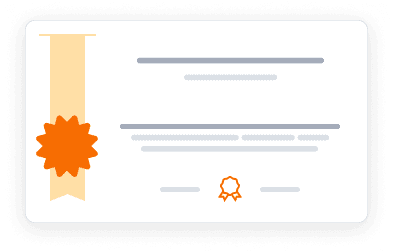This course is part of Behavioral Neuroscience Research.
This comprehensive course delves into behavioral neuroscience research using mouse models to study mental health conditions. Students learn to critically evaluate behavioral tests for anxiety and depression, collect and analyze data from mouse videos, and interpret results in the context of human psychiatric disorders. The course covers fundamental concepts in neuroanatomy, experimental design, and data analysis, with a focus on understanding the relationship between mouse behaviors and human mental health conditions. Through hands-on experience with behavioral data collection and analysis, students develop skills in research methodology and scientific interpretation.
Instructors:
English
English
What you'll learn
Critically evaluate behavioral tests for anxiety and depression in laboratory mice
Collect and analyze behavioral data from mouse video recordings
Interpret research results in context of human psychiatric disorders
Compare mouse behaviors with equivalent human behavioral patterns
Develop original research hypotheses in behavioral neuroscience
Skills you'll gain
This course includes:
PreRecorded video
Graded assignments, exams
Access on Mobile, Tablet, Desktop
Limited Access access
Shareable certificate
Closed caption
Get a Completion Certificate
Share your certificate with prospective employers and your professional network on LinkedIn.
Created by
Provided by

Top companies offer this course to their employees
Top companies provide this course to enhance their employees' skills, ensuring they excel in handling complex projects and drive organizational success.





There are 5 modules in this course
This course provides an in-depth exploration of behavioral neuroscience research using mouse models to understand anxiety and depression. Students learn to critically evaluate different behavioral tests, collect and analyze data from mouse videos, and interpret results in the context of human psychiatric disorders. The curriculum covers experimental design, data collection methods, and analysis techniques specific to behavioral neuroscience research. Students develop practical skills in analyzing behavioral data and understanding the implications for human mental health conditions.
Introduction, Anxiety: Background - elevated zero maze test
Module 1
Anxiety: Data Collection and Analysis
Module 2
Depression: Background - forced swim test
Module 3
Depression: Data Collection and Analysis
Module 4
Interpretation of results
Module 5
Fee Structure
Individual course purchase is not available - to enroll in this course with a certificate, you need to purchase the complete Professional Certificate Course. For enrollment and detailed fee structure, visit the following: Behavioral Neuroscience Research
Instructor

3 Courses
A Visionary Playwright and Educator Amplifying Voices from Conflict Zones
Abel Bult-Ito serves as Professor of Neurobiology and Neurophysiology at the University of Alaska Fairbanks, where he has established himself as a leading expert in behavioral neuroscience and animal models of psychiatric disorders. Originally from the Netherlands, he earned his doctorate in 1993 and has since published over 70 research articles focusing on neural regulation of compulsive behaviors. His groundbreaking work includes developing a mouse model of obsessive-compulsive disorder (OCD) and studying how the brain regulates adaptive and non-adaptive behaviors. Through his research at UAF's Department of Biology and Wildlife, he has made significant contributions to understanding behavioral genetics and circadian rhythms, as evidenced by his influential work on scheduled feeding and circadian entrainment. His recent work includes developing innovative approaches to studying compulsivity through bidirectional behavioral selection in mice, contributing to pre-clinical research on psychiatric disorders. As a faculty member, he has developed comprehensive online courses in behavioral neuroscience, focusing on research methods for studying anxiety, depression, and compulsive behaviors in laboratory mice. His expertise spans multiple areas including animal behavior, neural regulation, and human anatomy, while maintaining active research programs that bridge basic science with potential clinical applications.
Testimonials
Testimonials and success stories are a testament to the quality of this program and its impact on your career and learning journey. Be the first to help others make an informed decision by sharing your review of the course.
Frequently asked questions
Below are some of the most commonly asked questions about this course. We aim to provide clear and concise answers to help you better understand the course content, structure, and any other relevant information. If you have any additional questions or if your question is not listed here, please don't hesitate to reach out to our support team for further assistance.


